San Giovanni is one of only 4 Major Basilicas in the world, and one of the most overlooked tourist hotspots in Rome.
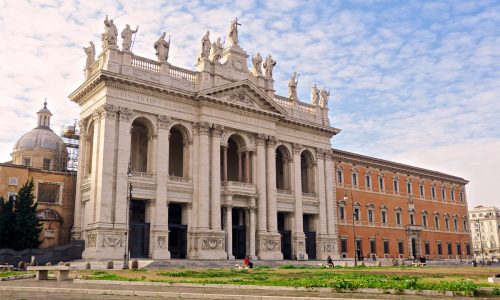
- As you all know, St Peter’s Basilica in Vatican City is the Mother of all Churches, right? WRONG!
- Ok, well at least St Peter’s is older! Nope, wrong again.
- Fine! But what about the Pope…his official seat as the Pope HAS to be in St Peter’s Basilica. Well, that’s 3 out of 3 incorrect.
I bet now you’re thinking, “if not St Peter’s Basilica, then where?” That’s where I can help you. Each of the attributes we listed before is true for the Archbasilica di San Giovanni in Laterano (St John Lateran), have you heard of it? You might know it by its full name ‘Archbasilica of the Most Holy Saviour and Saints John the Baptist and John the Evangelist at the Lateran’. No? Don’t worry, neither did I. To save time, from now on let’s just call it San Giovanni. San Giovanni is the highest-ranking Roman Catholic Church in the world, and here are a few reasons why.
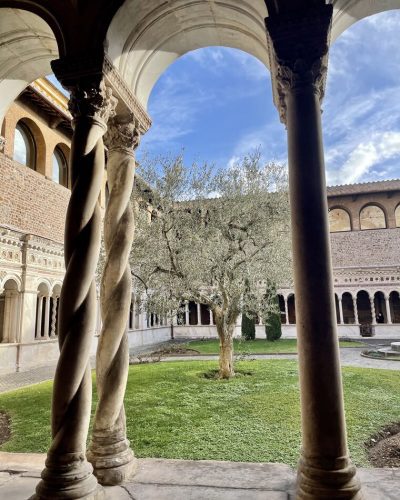
San Giovanni - The Old Church
Under Emperor Constantine in the early 4th century CE, a five-aisled basilica was built over the remains of the barracks of the Imperial guard (Equites Singulares). This is now the site where the modern San Giovanni sits. Pope Militades ordered the basilica built, but it was Pope Sylvester I that presided over its official dedication in 324 CE. This was around 35 years before the completion of the Old St Peter’s Basilica that had also been commissioned by Constantine.
After the completion of the Basilica of San Giovanni, the Lateran Palace (which is right next to the church) became the permanent residence of the Pope. In the 14th century the papal residence was moved to the Vatican. Before the Vatican became the official residence of the Pope, it was more of a pilgrimage site dedicated to the tomb of St Peter.
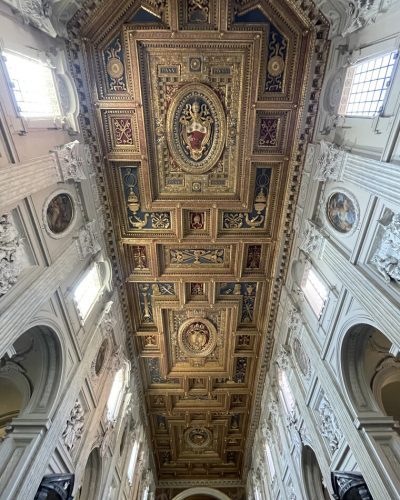
San Giovanni - The New Church
The Basilica of San Giovanni has suffered several major reconstructions over the millennia and not much of the original Constantinian material remains. The structure was primarily destroyed by vandals in the 5th century, an earthquake in the 9th century, and two substantial fires both in the early 14th century. After repairs and four subsequent rebuilds, the San Giovanni we know now is very different from the one Constantine had in mind. What we see today is largely credited to the Baroque architect Francesco Borromini. He designed the twelve giant niches in the central aisle that house statues of the apostles. The statues themselves were completed in the late baroque period by various artists of that time.
Outside, we see 15 giant statues perched atop the facade of the basilica, each standing over 7 meters high. Wow! Centrally positioned is Christ the Saviour flanked by both Saint John the Baptist and St John the Evangelist. The remaining twelve figures are the Doctors of the Church.
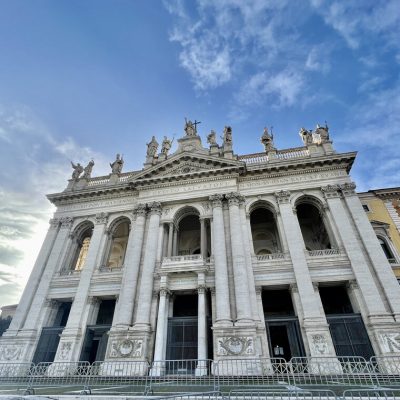
The Dead Popes' Society
San Giovanni is home to several papal tombs including the tombs of Pope Alexander III, Pope Clement XII, Pope Innocent III, and Pope Leo XIII – the last pope to be entombed outside of St Peter’s Basilica. However, the remains of at least twelve other popes – from John X (914 – 928) to Innocent V (1276) were mostly destroyed in the fires of the 14th century. On a side note: John X was the first Pope to be buried INSIDE the city walls, before that they were laid to rest in the catacombs beyond the city limits. In addition to all of the papal tombs, there are two cardinals entombed in the basilica.
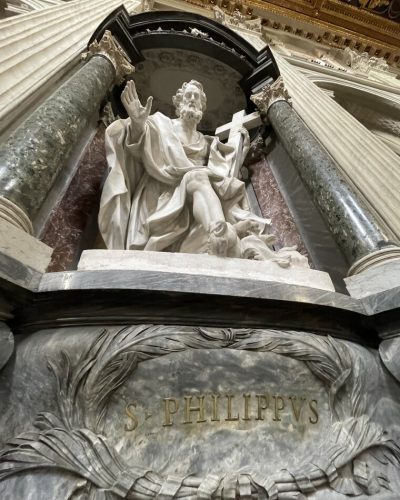
Thrones, Dinner Tables, and Other Religious Relics
As the official seat of the Bishop of Rome (aka The Pope), the Basilica of San Giovanni contains a Papal Throne and also a special Papal Altar from which only the current pope may preside, although he hardly ever visits. Within the Papal Altar, there is a wooden table from which St Peter and many of the earliest popes are said to have celebrated the Eucharist.
San Giovanni is also home to the Altar of the Holy Sacrament. You may partly see the cedar table that is believed to be the very one used by Christ and his disciples at the Last Supper. The table is located directly behind a bronze relief that depicts the Last Supper.
Positioned above the Papal Altar there are two busts of St Peter and St Paul that are said to contain the skulls (or parts of the skulls) of their respective saints. A papal throne, a dinner table (perhaps the most famous one in history), and two very distinguished guests of honour along with a smattering of popes from various periods. Quite an impressive collection of artifacts, don’t you think?
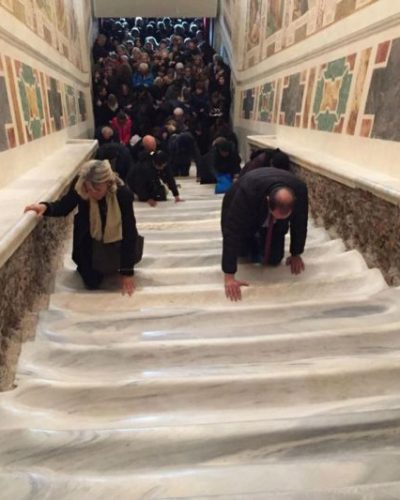
How To Visit San Giovanni in Laterano
The Basilica of San Giovanni is located just 2km south of the central train station of Roma Termini and is easily accessible by the Metro A. To enter the church is free of charge except for a small fee to visit the cloisters.
The Basilica of San Giovanni is part of a collection of important religious sites including the Lateran Palace, The Lateran Baptistery, and the Holy Stairs (Scala Sancta). In my opinion it is worth it to invest in a guided tour to ensure you don’t miss a thing.
On your next visit to Rome, don’t miss out on this overlooked gem of history, art, and architecture.

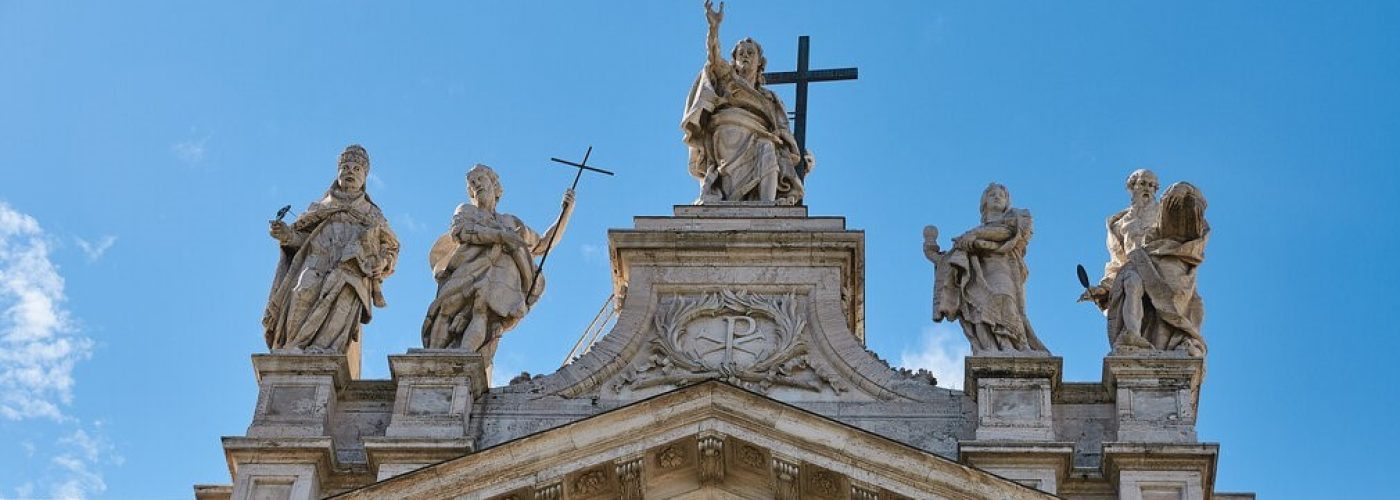
Recent Comments